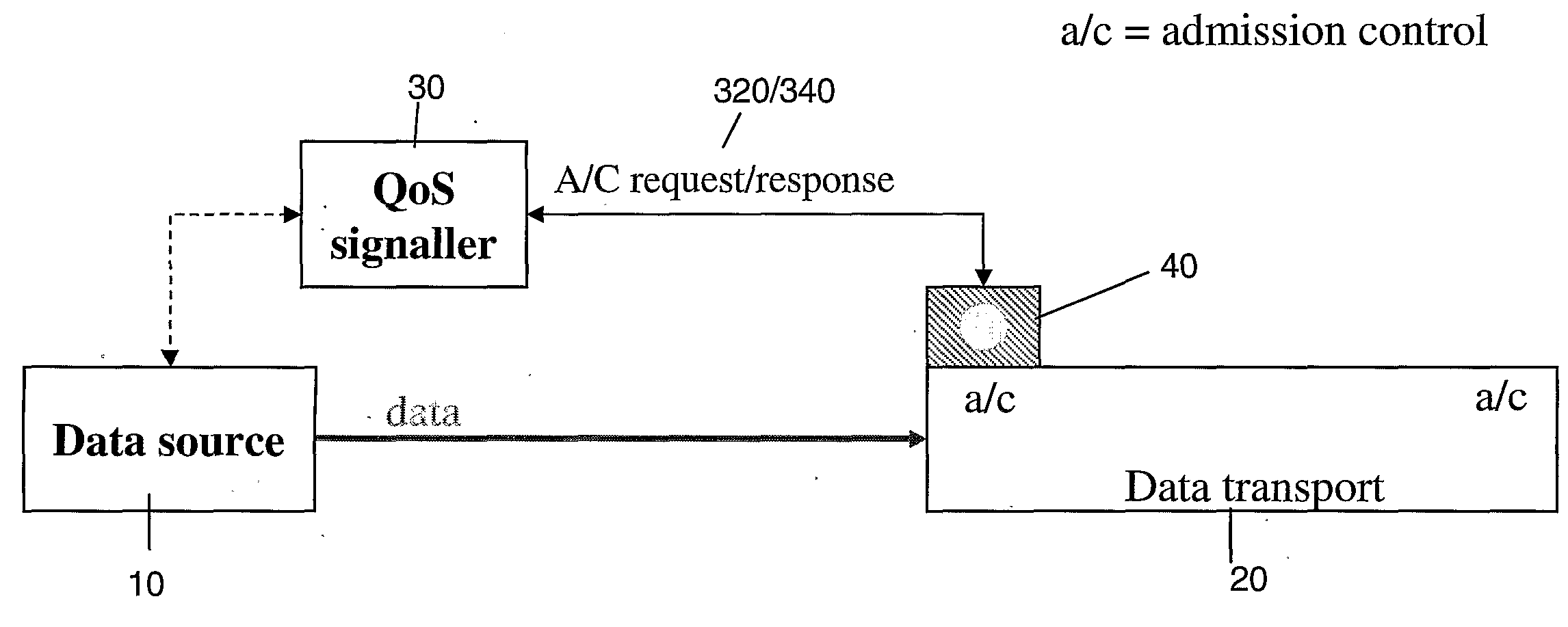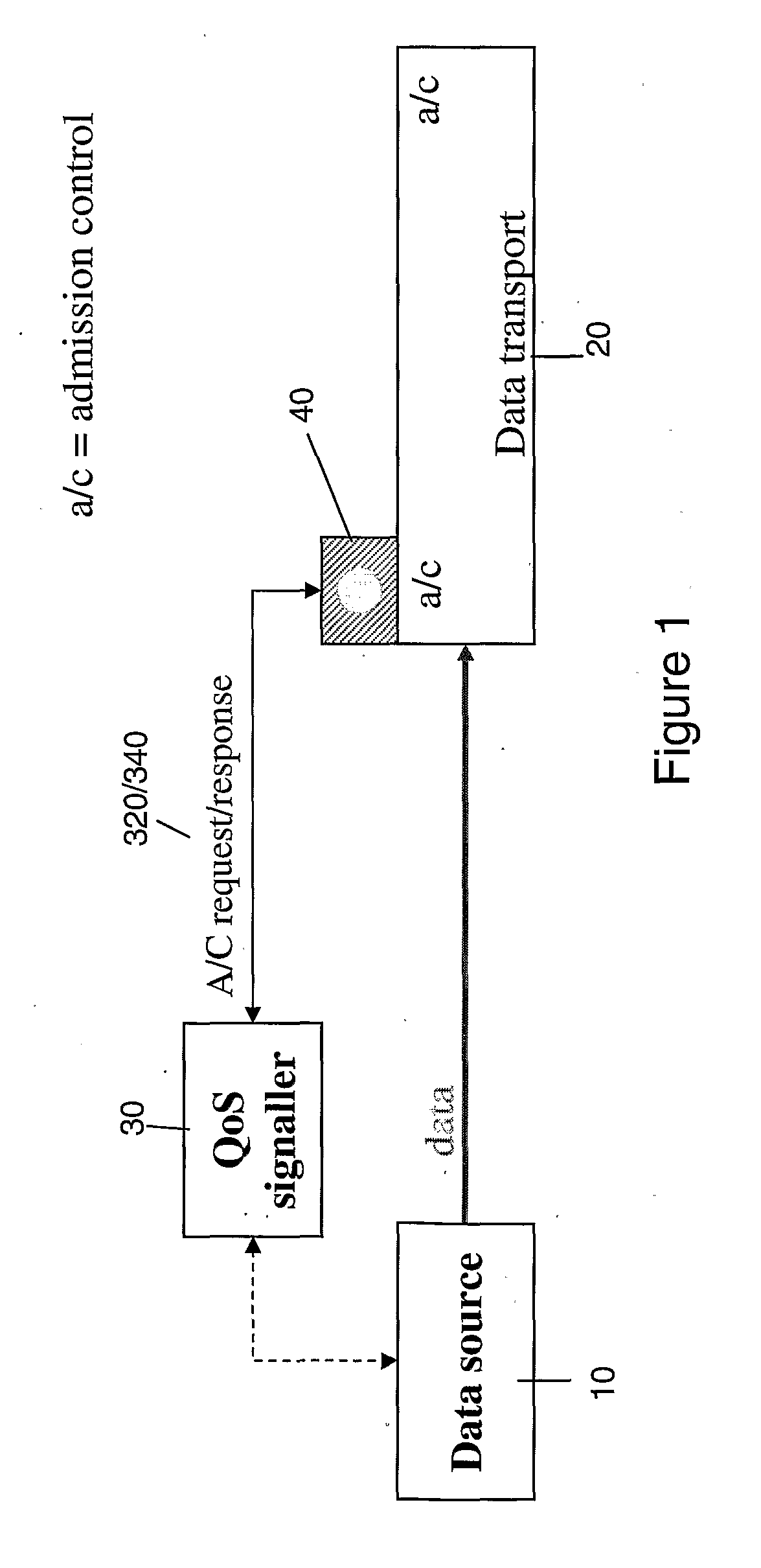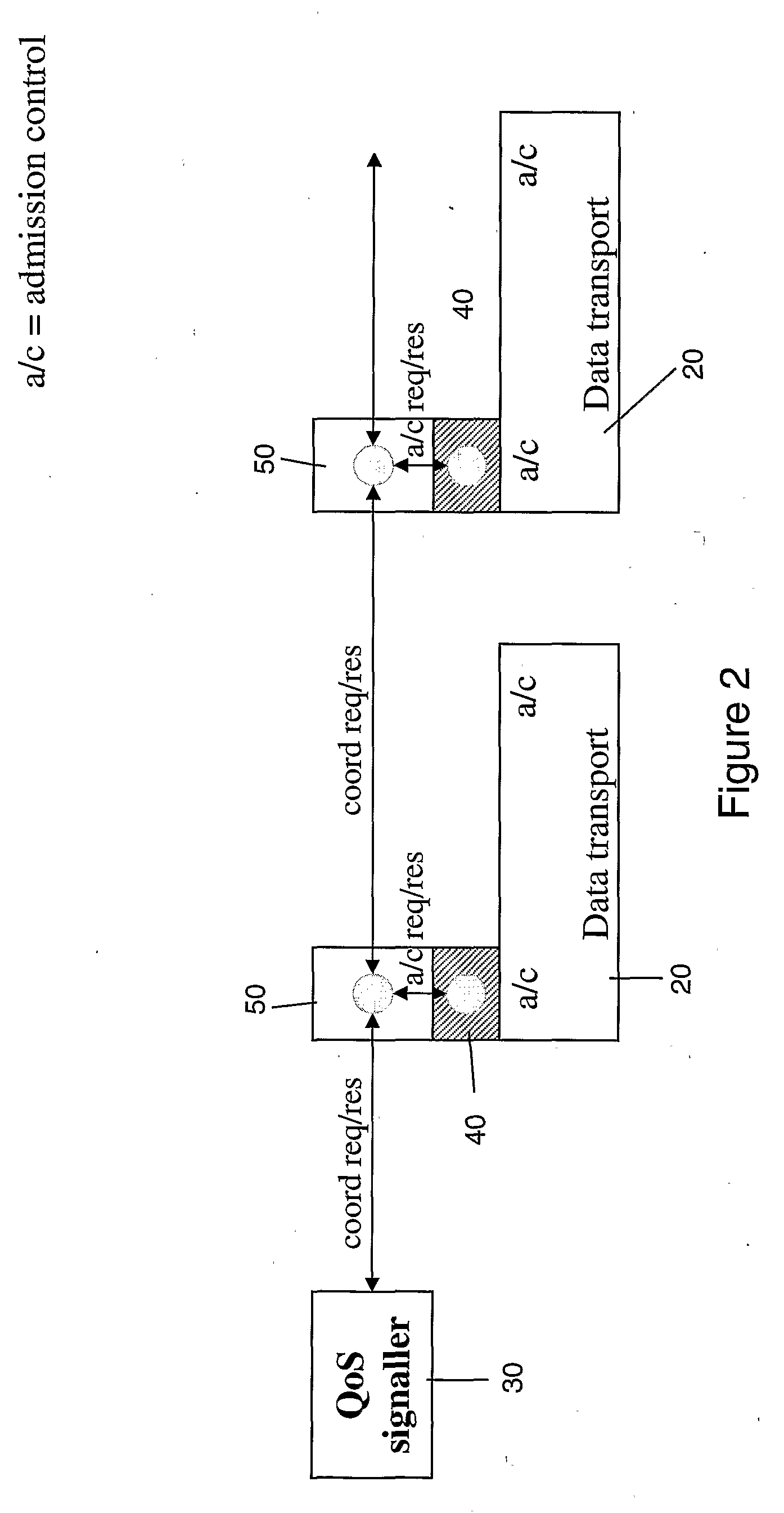Method and system for coordination of admission control in transport networks
a technology of transport network and admission control, applied in data switching networks, frequency-division multiplexes, instruments, etc., can solve the problems of low bandwidth expectations, packet loss, delay, or jitter,
- Summary
- Abstract
- Description
- Claims
- Application Information
AI Technical Summary
Benefits of technology
Problems solved by technology
Method used
Image
Examples
first embodiment
[0071]A more detailed description of the operation of the “blocking mode” variant of the first embodiment will now be described, with respect to FIGS. 11 to 13, and 18 and 19.
[0072]As noted above, in blocking mode the admission control requests are served by the particular transport network domain for which a co-ordinator entity is acting, before the co-ordinator entity forwards on the admission control request to a next hop co-ordinator. FIG. 11 illustrates a state diagram of the operation of a co-ordinator entity acting in “blocking mode”.
[0073]After power up and initialisation, a co-ordinator entity 50 acting in blocking mode enters an idle state 110 in which it awaits the receipt of a co-ordination request message co-ord (req). A co-ordination request message co-ord (req) may be received from any of a QoS signaller 30 (if the co-ordinator is a first hop co-ordinator for a particular flow) or from another co-ordinator entity 50 in the co-ordination layer. Typically, a co-ordinati...
second embodiment
[0112]An example of the above is shown in FIGS. 21 and 23, wherein in order for an IP flow to pass from a sending application 2101 to a receiving application 2102, it must traverse multiple transport networks TN12114, TN22116, and TN32124, TN42126, TN52134, and TN62136. However, these transport networks are themselves administratively arranged into administrative domains with transport networks TN1 and TN2 being within the BT administrative domain 2110, transport networks TN3 and TN4 being within the FT administrative domain 2120, and transport networks TN5 and TN6 being within the DT administrative domain 2130. Whilst within any particular administrative domain comprising a collection of transport networks it will be relatively straightforward to allow a co-ordinator entity to know the addresses of other co-ordinator entities in the same domain, it is more problematic for a co-ordinator entity within one administrative domain to learn the address of co-ordinator entities within oth...
third embodiment
[0169]Additionally provided within the computer readable storage medium 410 are operating system software 4310, which is conventional, as well as domain gateway function software 4410, to enable the computer system to act as the domain gateway, and again which is conventional. In accordance with embodiments based on the invention, however, additionally provided is a flow ID to LSP or VC mapping table 4510, which maps flow IDs to identified LSPs or VCs, and which is referred to by the computer system and in particular the admission control process 4010 running thereon, when it receives a packet from the data source 10 with a particular flow ID, so as to know onto which of the LSPs or VCs it must put that packet. In this respect, when operating in this manner the computer system is a router of the transport network.
PUM
 Login to View More
Login to View More Abstract
Description
Claims
Application Information
 Login to View More
Login to View More - R&D
- Intellectual Property
- Life Sciences
- Materials
- Tech Scout
- Unparalleled Data Quality
- Higher Quality Content
- 60% Fewer Hallucinations
Browse by: Latest US Patents, China's latest patents, Technical Efficacy Thesaurus, Application Domain, Technology Topic, Popular Technical Reports.
© 2025 PatSnap. All rights reserved.Legal|Privacy policy|Modern Slavery Act Transparency Statement|Sitemap|About US| Contact US: help@patsnap.com



